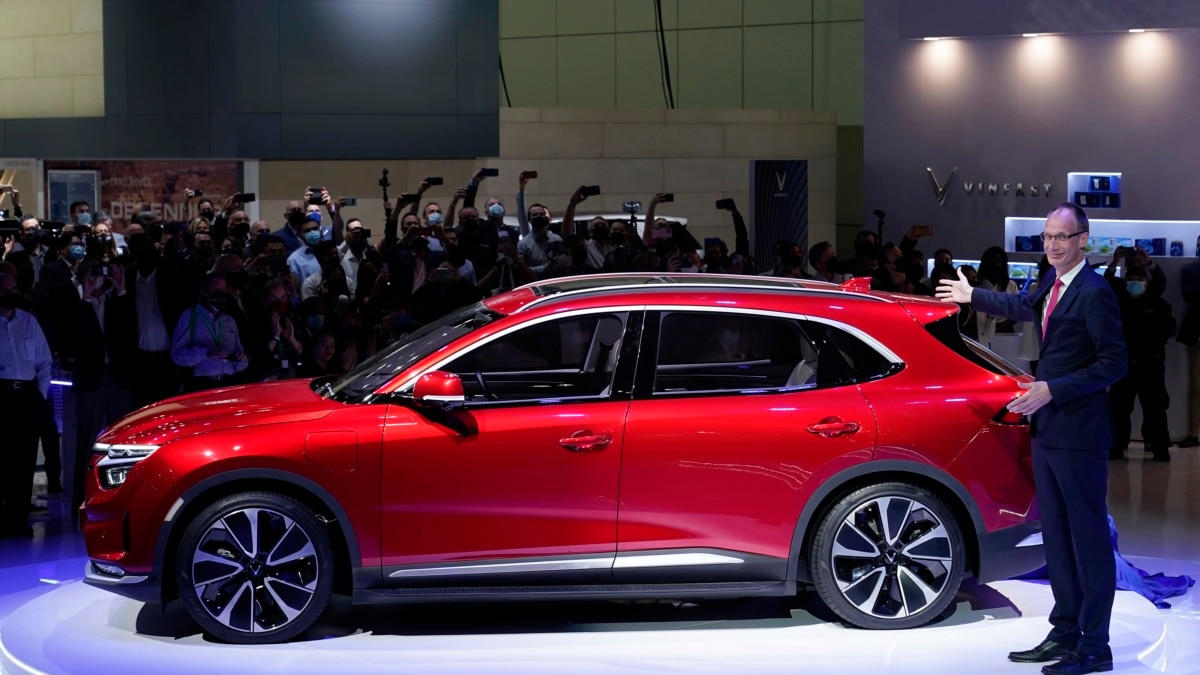Persistently high gasoline prices frustrate many Americans and create a political headache for President Joe Biden’s administration, but it could also accelerate the process of moving the country to greater use of renewable energy vehicles – especially electricity.
Experts say EV sales, or EV sales, tend to rise when fuel prices rise, although they warn that it is difficult to draw a straight line from prices at the gas station to buying a car.
“People buy electric cars for many reasons, so they’re not entirely dependent on gasoline prices, but that certainly makes them worse,” said Genevieve Cullen, president of the Electric Drive Transportation Association, a trade group that represents electric vehicle manufacturers.
An estimated 468,000 new electric vehicles were sold in the U.S. from the beginning of the year through September, according to data from Atlas Public Policy, a group that tracks the electric vehicle market. This corresponds to an increase of 45% compared to the 323,000 electric vehicles sold in all of 2020.
Looking at the month of September 2021 alone, US consumers bought 57,000 new electric vehicles. That was 63% more than the 35,000 sold in September 2020 and 90% more than the 30,000 sold in September 2019.
FILES – This photo taken on Aug. 13, 2021 shows cars charging at a Tesla supercharging station in Arlington, Virginia.
Gas prices make electric cars attractive
According to the Bureau of Labor Statistics, the cost of one kilowatt hour of electricity in the US rose from 13.5 cents in October 2020 to 14.2 cents in October 2021, up 5.2%. In contrast, the BLS found that the average cost of a gallon of gas increased from $ 2.23 in October 2020 to $ 3.48 in October 2021, an increase of 56.1%.
“High gasoline prices are tough on Americans who drive gasoline vehicles,” said Luke Tonachel, director of clean vehicles and fuels for the Natural Resources Defense Council. “The volatility in the world price of oil used to make gasoline is a constant concern.
In the USA, however, the structure of the electricity market is preventing a sharp rise in prices.
“The electricity prices are regulated and therefore quite stable,” said Tonachel. “An EV driver can expect to pay a quarter or less per mile [someone] drive a gasoline vehicle. ”
US sales of electric vehicles are set to increase further
While EV sales are growing rapidly, the numbers start with a low base value. As recently as five years ago, EV sales represented less than 1% of new vehicles sold in the United States. That number is expected to have grown to around 4% this year, and a real spike is in sight.
LMC Automotive, which tracks vehicle sales and estimates the future of the market, predicts that by 2030 EVs, including all-electric and plug-in hybrids that run on both electricity and gasoline, will account for 34.2% of new vehicle sales be in the United States.
That transition will continue as the federal government increasingly develops policies to bring the country in line with President Biden’s promise at the recent United Nations climate change conference to bring US greenhouse gas emissions to roughly half their 2005 levels by 2030 reduce.
The Environmental Protection Agency announced this summer that it would structure emissions guidelines for cars with internal combustion engines in order to “accelerate the transition of the light commercial vehicle fleet to an emission-free future”.
“We will see the auto market accelerate the transition to electric vehicles when the US EPA sets emission standards that reduce vehicle pollution to zero,” Tonachel said. “Ultimately, that’s what we need to face the climate crisis, and that will also lead to cheaper mobility.”
Another factor is the further expansion of a network of charging stations across the country. The Department of Energy currently lists more than 52,000 stations in the country with more than 100,000 points of sale. The infrastructure bill recently signed by President Biden includes $ 7.5 billion to increase that number by a factor of 10 over the next decade.
Broader future for renewable energies
There is also reason to believe that the increasing electrification of the transport system will drive the introduction of renewable energies into other aspects of daily life as well. Because as car battery technology continues to improve, it is becoming easier and cheaper to store energy from wind and solar energy.
“Electrifying transportation is key to expanding renewables in the power sector,” said Cullen of the Electric Drive Transportation Association. “Because batteries are one of the few effective and portable ways to store electricity. They will allow utilities and other power producers to control demand so you can save excess wind or solar power. ”
She added, “Battery storage is the way to get there. The electrical transport, this mobile electrical load, can be a network value. ”

